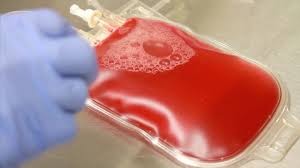Cord blood is usually collected from the umbilical cord vein attached to the placenta after the umbilical cord has been detached from the nursling. It is a rich source of hematopoietic stem cells, which are precursors of blood cells. Cord blood contains stem cells, including hematopoietic cells, which can be used to treat hematopoietic and long-term genetic disorders, cancerous blood disorders such as leukemia and Fanconi anemia.
Haematopoietic stem cells (HSCs) can make every type of cell in the blood – RBCs, WBCs and platelets or thrombocytes. They are responsible for maintaining blood production throughout our lives. The cord blood is transplanted into the patient, where the hematopoietic stem cells can make new, healthy blood cells to replace cells of patient’s either damaged by disease or by a medical treatment such as chemotherapy for cancer.
Cord blood derived cells play a major role in prevention of multiple myeloma disease.Multiple myeloma is a cancer formed by malignant plasma cells that are found in the bone marrow and are normally important to a healthy immune system. Multiple myeloma is an unrecoverable disease thought to be characterized by immune dysregulation and exhaustion, whereby proliferation of malignant plasma cells is not checked by the immune system. Long-term remissions in some patients after stem cell transplants from donors have been observed, but treatment-related toxicity limits the widespread use of this therapy. Cord blood was once thought of as a waste product of the birthing experience, but now it is valued for its content of stem cells. Today, more than 20 years after the first successful umbilical cord blood stem cell transplant, more families are seeking information about whether or not to invest in saving their newborn’s umbilical cord blood. Saving the cord blood in public banks is a worthy undertaking for any family.

